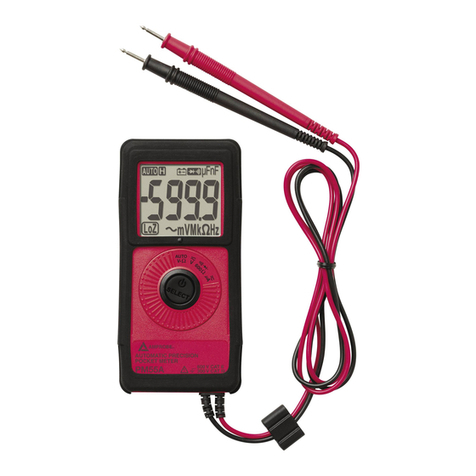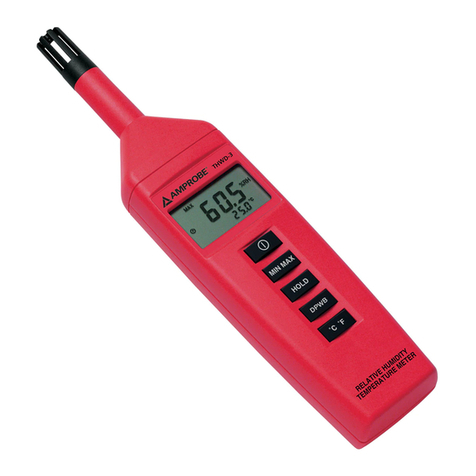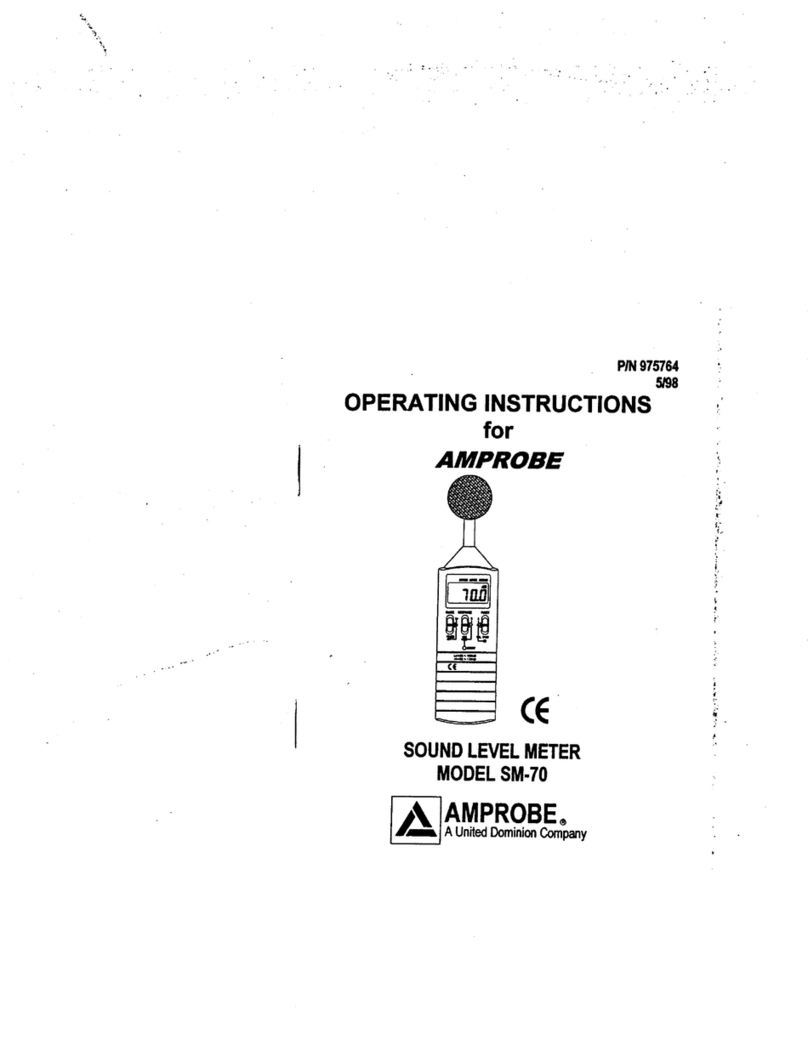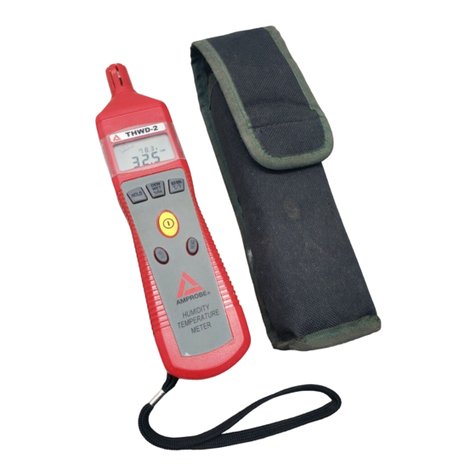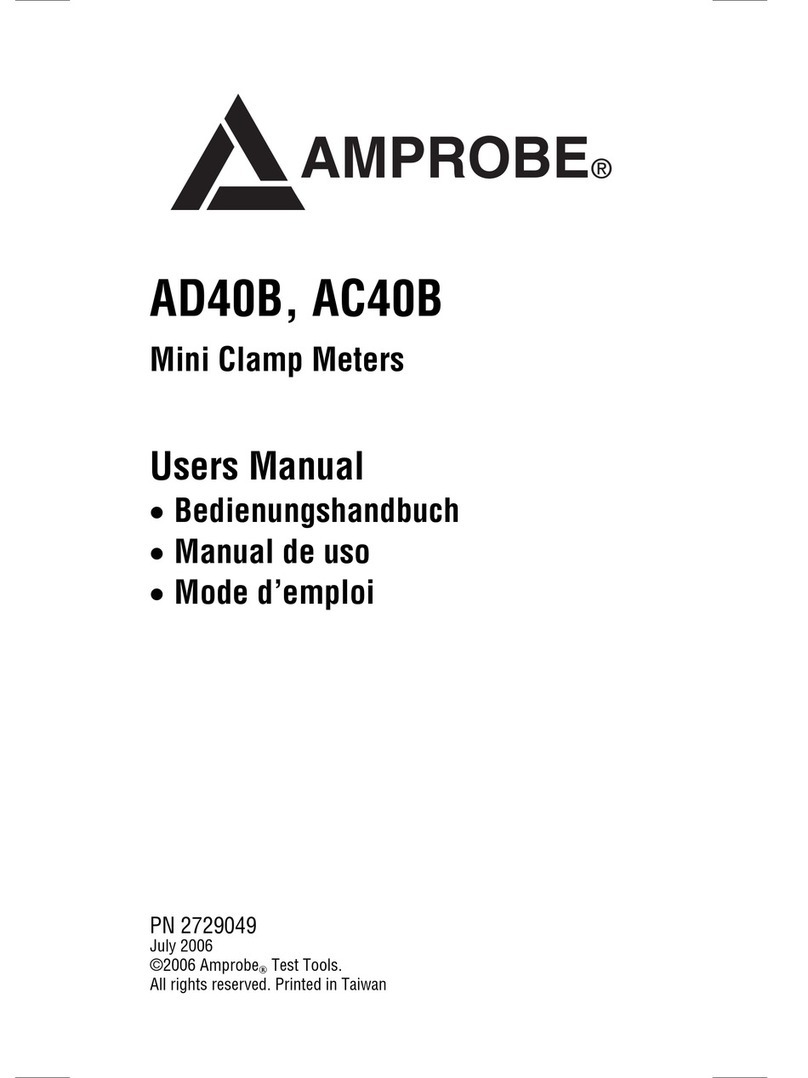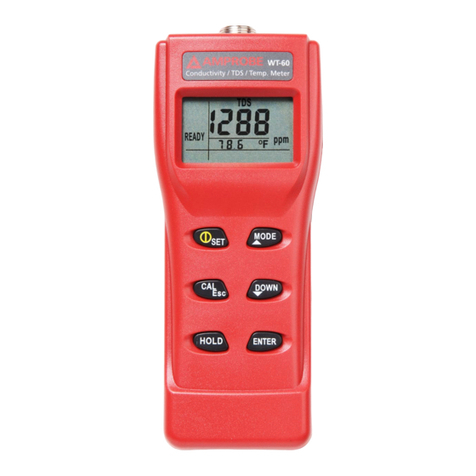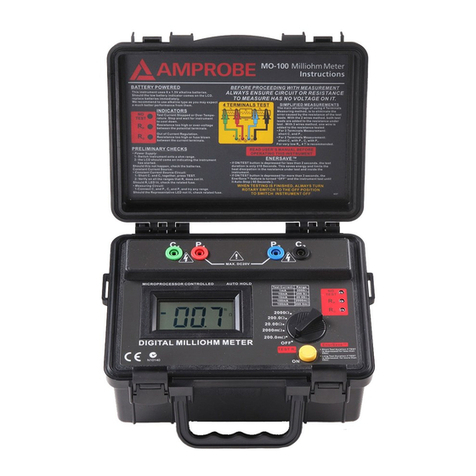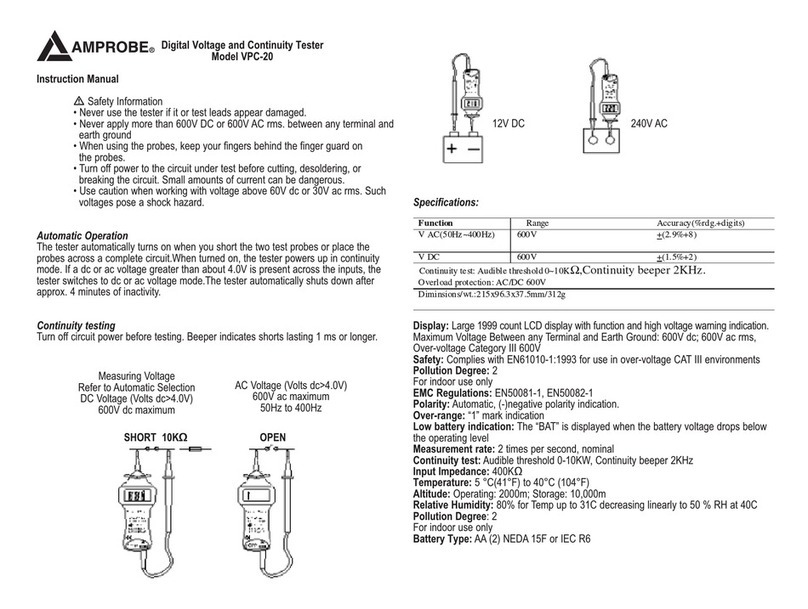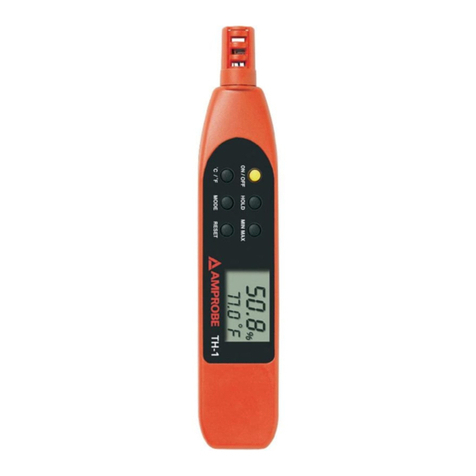
Locating Opens
Use the R2000 & T2200
1. Plug the alligator clip cordset into the
T2200 and attach one clip to a separate
ground and the other to the wire.
2. Where possible, ground any adjacent
wires.
3. Set the T2200 to ‘HIGH’.
4. Set the R2000 to the ‘OPEN’ mode (use
the ‘SHORT’ mode if wire is in moist
soil). Adjust the sensitivity and range
switch until 8–9 LEDs are displayed.
5. Trace the wire. The open will be at
the point where you begin to lose the
signal.
Tracing Energized Wires
from the Panel to a Load
Use R2000, T2200, A2201, B2024 (optional).
1. Plug the A2201 and the B2024 into the
T2200.
2. Set the T2200 to ‘HIGH’.
3. Set the R2000 to ‘OPEN’ mode and adjust
the sensitivity and range switch until 8–9
LEDs are displayed.
4. Place the clamp around the energized
wire. Make sure it’s the ‘HOT’ wire only.
5. Trace the wire to identify the loads. You
may alternate between ‘OPEN’ and
‘SHORT’ mode and adjust the sensitivity
and range switch, as needed, to improve
signal detection.
Locating Shorts
Use R2000 & T2200
1. Plug the alligator clip cordset into the T2200. Set the T2200 to ‘LOW’ mode.
2. Attach one clip to one of the shorted wires and the other clip to the other wire.
3. Turn T2200 ‘ON’.
4. Set the R2000 to the ‘SHORT’ mode and adjust the sensitivity and range switch until 8–9 LEDs are displayed.
5. Trace the wire. The short will be at the point where you begin to lose the signal.
Identifying Wires in a Bundle
For energized wires, follow procedure under ‘Tracing Energized Wires’. At the bundle, separate the individual wires
from each other with your fingers to determine which wire is producing the signal.
For non-energized wires, follow the procedure under ‘Locating Opens’, and proceed as above.
R2000
T2200
Signal No Signal
Fig. 3 Tracing Open Wires
R2000
LSG
AD-1
No SignalSignal
Panel
Box
C2902
Cord Set
To Transformer
Fig. 4 Tracing
Energized Wires Tracing Energized Wires from
a Load to the Panel
Use R2000 & S2600-A (LSGs).
1. Plug the alligator clip cordset into the LSG.
2. Connect one clip to the ground separate
from the wire to be traced (the ‘HOT’ wire).
3. Connect the other clip to the ‘HOT’ wire (at a
110V outlet, you can use the AD-1 adapter).
4. Set the R2000 to the ‘SHORT’ mode and
adjust the sensitivity and range switch until
8–9 LEDs are displayed.
5. Trace the wire.
T2200
B2024
A2201
Fig. 5
Tracing
Downstream
Loads
